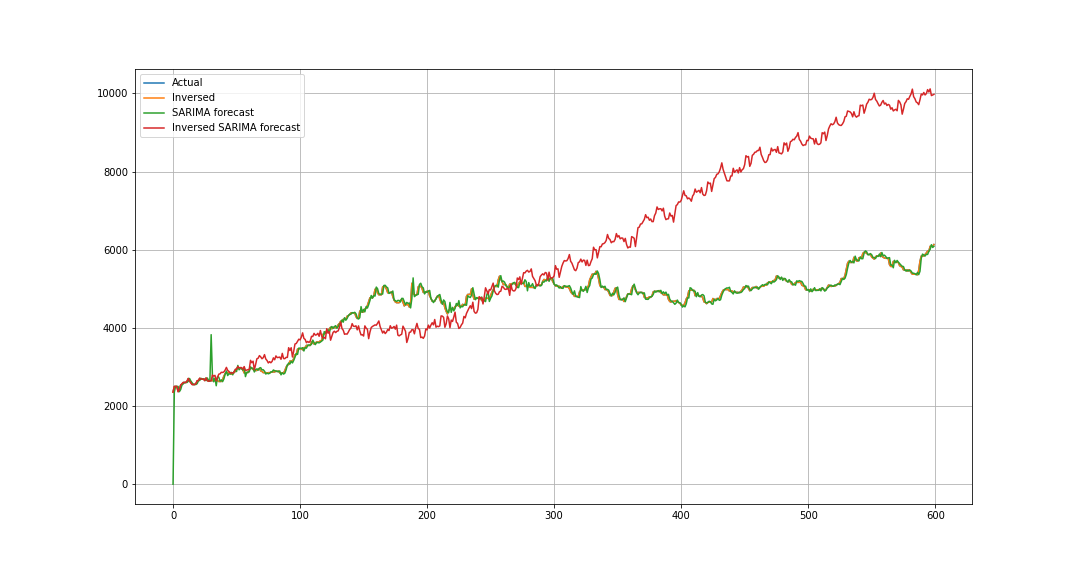SARIMAX: Restoring initial values after differencing
77 views
Skip to first unread message
Вячеслав Загородин
Nov 3, 2021, 10:34:40 AM11/3/21
to pystatsmodels
Hello,
I've been experimenting with simple_differencing=True but i don't understand how to restore the initial values after predition.
I have a function that reverses differencing of order 'n' given 'n' first values of the initial array and it works fine, i've tested it many times. For example, i can restore values of a time series after taking both seasonal and first differencies.
But when i apply this to sarima predictions it doesn't work: the result differs drastically from the same prediction with simple_differencing=False and from the initial time series.
Can you, please, explain how to retore the initial values correctly?
Вячеслав Загородин
Nov 8, 2021, 5:52:12 AM11/8/21
to pystatsmodels
Hi,


I'm not sure if my question makes any sense, but i'd like to provide a simple illustration of what i'm talking about.
Here i have two identical forecasts with the only difference being simple_difference parameter.
Then i test my inverse_diff function that perfectly restores the initial time series after differencing.
But, as i said before, when i apply it to forecast_simple it doesn't work at all.
This happens regardless of the time series or SARIMA orders i choose.
I would really appreciate if you gave me some insights on what i'm doing wrong.


среда, 3 ноября 2021 г. в 17:34:40 UTC+3, Вячеслав Загородин:
Вячеслав Загородин
Nov 8, 2021, 6:07:11 AM11/8/21
to pystatsmodels
There are two more facts i'd like to mention
With (p, 1, 0)x(0,0,0,0) models it works way better and almost restores the actual forecast.
I have no idea what happens when i do this, i discovered it by accident, but the result looks like the initial time series shifted towards future values.
It would be great if you could also explain this.
inversed_forecast = my_ts.inverse_diff(forecast_simple / sarima_simple.params[:-1].sum(),\
time_series[:31],\
orders=[30, 1])
2. I tried to recreate the same procedure using just LinearRegression from sklearn. I forecasted the differenced time series using 'p' usual lags and 'P' seasonal lags. It gives almost the same coefficients and results as SARIMA and i also can't restore the time series after that.
понедельник, 8 ноября 2021 г. в 13:52:12 UTC+3, Вячеслав Загородин:
Reply all
Reply to author
Forward
0 new messages
